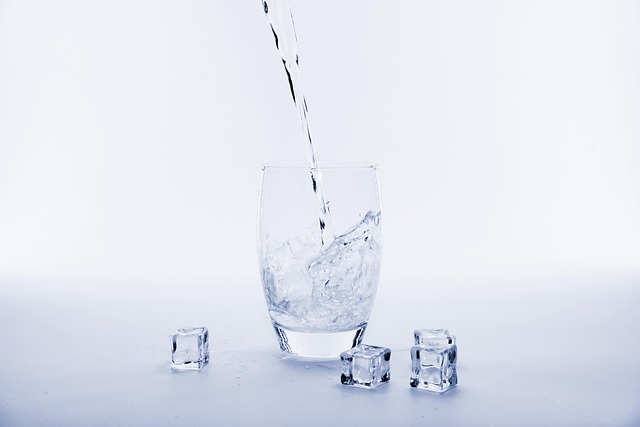Cold water therapy, particularly cold plunges, is a popular anti-aging practice. It triggers cellular responses by constricting blood vessels, reducing inflammation, and promoting circulation upon rewarming. Regular sessions enhance skin detoxification, improve collagen production, stimulate endorphin release, and protect against environmental stressors, resulting in improved skin tone, texture, elasticity, and reduced wrinkles. However, safety precautions are vital for gradual acclimation to cold temperatures, especially for individuals with specific health conditions.
Unleash your skin’s natural detoxification process and embrace a younger-looking complexion with regular cold water therapy. This ancient practice is gaining modern popularity as a game-changer in skincare routines. Cold plunges offer a simple yet powerful way to enhance the body’s natural anti-aging mechanisms, reducing wrinkles and promoting skin rejuvenation. Dive into this comprehensive guide to uncover the science behind cold’s transformative effects on your skin and learn how to safely incorporate cold therapy into your daily regimen for optimal results.
Understanding Cold Water Therapy: Unlocking the Power of Cold Plunges
Cold water therapy, particularly the practice of cold plunges, has gained significant attention for its potential anti-aging benefits and ability to promote youthful skin. This therapeutic approach involves briefly exposing oneself to frigid or cold water, often in the form of a quick dip or shower. The shock of cold temperature triggers a range of physiological responses within the body, unlocking a cascade of restorative processes.
When you subject your body to cold exposure, blood vessels constrict, sending more oxygen-rich blood to essential organs and muscles. This increased circulation promotes skin cell regeneration and helps reduce inflammation, which can contribute to aging skin. Additionally, cold plunges stimulate the release of endorphins, providing a natural boost to your immune system. Over time, consistent practice may result in improved skin tone, texture, and elasticity, hence its reputation as an effective method for skin rejuvenation and combating signs of aging.
The Science Behind Cold's Anti-Aging Benefits for Skin
The science behind cold’s anti-aging benefits for skin is fascinant. Cold water therapy, such as a cold plunge or ice bath, triggers a cascade of positive cellular responses. When your body is exposed to cold, blood vessels constrict, reducing inflammation and promoting circulation upon rewarming. This process helps to increase collagen production, which is crucial for maintaining skin elasticity and firmness—key factors in preventing the appearance of wrinkles.
Moreover, cold exposure stimulates nerve endings, releasing endorphins that can reduce stress hormones like cortisol. High levels of cortisol are linked to accelerated aging and skin damage. Regular cold plunges may also enhance skin’s natural detoxification process by boosting lymphatic flow, which helps flush out toxins and waste products from cells, leaving your complexion looking healthier and more youthful.
Practical Applications: Incorporating Cold Plunges into Your Skincare Routine
Incorporating regular cold plunges into your skincare routine can offer a multitude of anti-aging benefits and contribute to achieving youthful skin. Cold water therapy, when practiced correctly, helps stimulate blood circulation, enhancing the delivery of essential nutrients to the skin while promoting cell regeneration. This process not only improves skin elasticity but also reduces the appearance of wrinkles, providing a natural, non-invasive alternative for those seeking to slow down the aging process.
The cold exposure involved in a cold plunge serves as an effective antidote to environmental stressors that accelerate skin aging. By protecting the skin barrier and reducing inflammation, it can mitigate damage caused by pollution and UV rays, two significant contributors to premature aging. Furthermore, regular immersions in cold water may boost collagen production, known for its crucial role in maintaining skin firmness and a smooth, rejuvenated appearance.
Potential Side Effects and Safety Precautions for Optimal Results
While cold water therapy, such as cold plunges, offers a range of potential anti-aging benefits for the skin—including wrinkle reduction and improved texture—it’s crucial to approach this practice with safety in mind. Sudden and prolonged exposure to extreme cold can trigger adverse reactions, especially in individuals with certain health conditions or who are not accustomed to cold immersion. Shivering, skin reddening, and temporary joint stiffness are common side effects. To ensure optimal results and minimize risks, it’s essential to gradually acclimate yourself to colder temperatures, starting with lukewarm water and slowly decreasing the temperature over several minutes. Consistency is key; regular, moderate cold exposure is more beneficial than infrequent, intense sessions. Individuals with cardiovascular issues, Raynaud’s disease, or pregnancy should consult a healthcare provider before trying cold therapy. Additionally, always ensure you’re in a safe environment and use proper technique to prevent accidents or injuries related to the cold.
Regular cold water therapy, or cold plunging, offers a simple yet powerful way to support natural detoxification and promote youthful, radiant skin. By embracing the benefits of cold exposure, you can unlock the skin’s anti-aging potential, reducing wrinkles and enhancing overall skin health. With its scientific backing and practical applications, incorporating cold plunges into your skincare routine is an effective step towards achieving a vibrant, rejuvenated complexion. Remember, when done safely, the right cold water therapy techniques can be a game-changer for your skin’s longevity.
